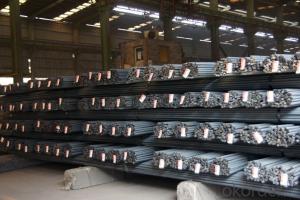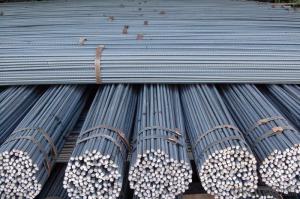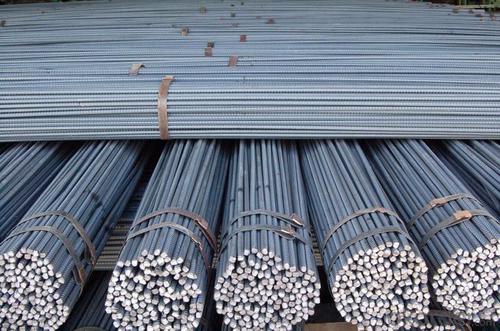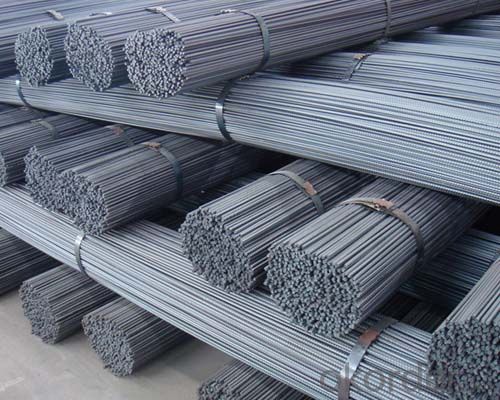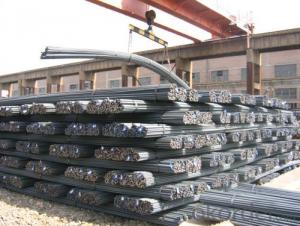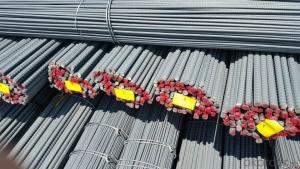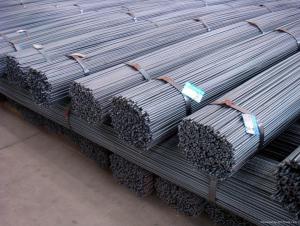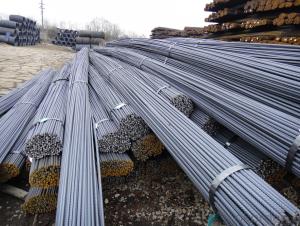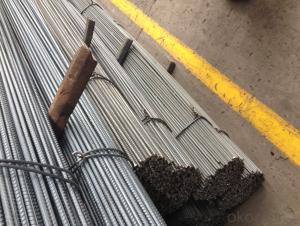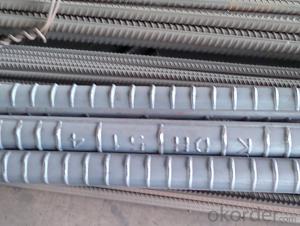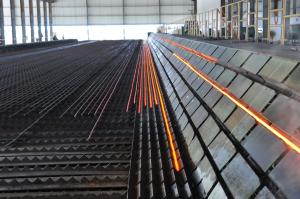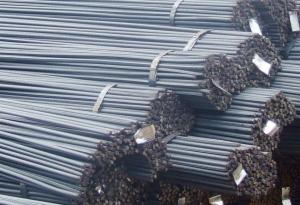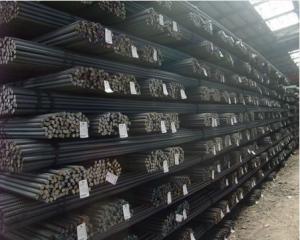Good quality deformed bars with grade HRB400
- Loading Port:
- Tianjin
- Payment Terms:
- TT OR LC
- Min Order Qty:
- 25 m.t.
- Supply Capability:
- 100000 m.t./month
OKorder Service Pledge
OKorder Financial Service
You Might Also Like
Product Description:
Specifications of HRB400 Deformed Steel Bar:
Standard | GB | HRB400 | |
Diameter | 10mm-32mm | ||
Length | 6M, 12M | ||
Place of origin | Hebei, China mainland | ||
Advantages | exact size, regular package, chemical and mechanical properties are stable. | ||
Type | Hot rolled deformed steel bar | ||
Chemical Composition: (Please kindly find our chemistry of our material based on HRB400 as below for your information)
Grade | Technical data of the original chemical composition (%) | ||||||
C | Mn | Si | S | P | V | ||
HRB400 | ≤0.25 | ≤1.60 | ≤0.80 | ≤0.045 | ≤0.045 | 0.04-0.12 | |
Physical capability | |||||||
Yield Strength (N/cm²) | Tensile Strength (N/cm²) | Elongation (%) | |||||
≥400 | ≥570 | ≥14 | |||||
Theoretical weight and section area of each diameter as below for your information:
Diameter(mm) | Section area (mm²) | Mass(kg/m) | Weight of 12m bar(kg) |
18 | 254.5 | 2.00 | 24 |
20 | 314.2 | 2.47 | 29.64 |
22 | 380.1 | 2.98 | 35.76 |
Usage and Applications of HRB400 Deformed Steel Bar:
Deformed bar is widely used in buildings, bridges, roads and other engineering construction. Big to highways, railways, bridges, culverts, tunnels, public facilities such as flood control, dam, small to housing construction, beam, column, wall and the foundation of the plate, deformed bar is an integral structure material. With the development of world economy and the vigorous development of infrastructure construction, real estate, the demand for deformed bar will be larger and larger..
Packaging & Delivery of HRB400 Deformed Steel Bar:
Packaging Detail: products are packed in bundle and then shipped by container or bulk vessel, deformed bar is usually naked strapping delivery, when storing, please pay attention to moisture proof. The performance of rust will produce adverse effect.
Each bundle weight: 2-3MT, or as required
Payment term: TT or L/C
Delivery Detail: within 45 days after received advanced payment or LC.
Label: to be specified by customer, generally, each bundle has 1-2 labels
Trade terms: FOB, CFR, CIF
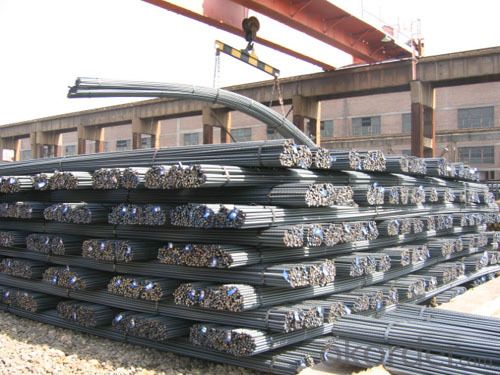
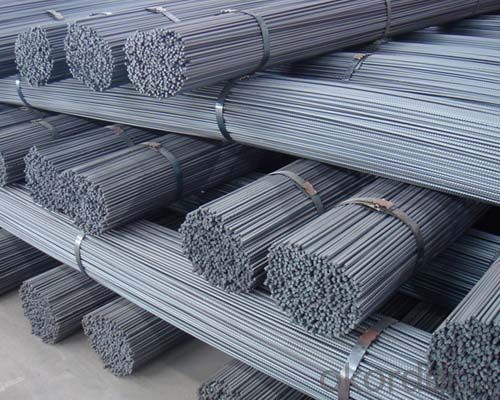
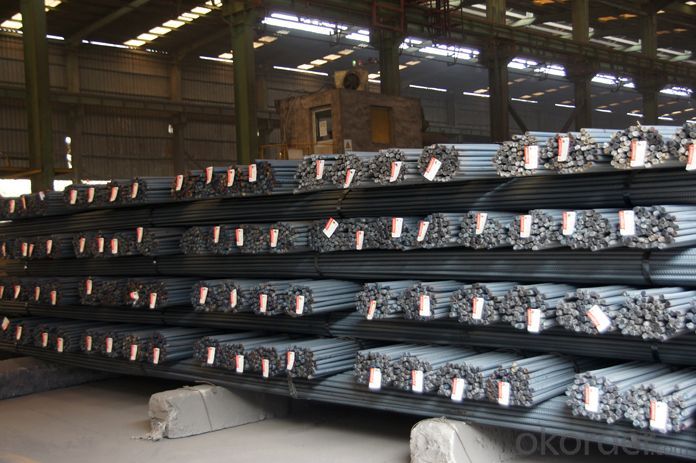
*If you would like to get our price, please inform us the size, standard/material and quantity. Thank you very much for your attention.
- Q: What is the effect of welding on the properties of steel rebars?
- The effect of welding on the properties of steel rebars can vary depending on several factors. Firstly, welding can introduce heat into the rebars, which may cause localized changes in the material's microstructure. This can lead to changes in the rebars' mechanical properties, such as hardness and strength. The heat-affected zone (HAZ) near the weld can experience changes in grain structure, which may affect the rebars' ability to withstand tension, compression, or bending forces. Secondly, the welding process can introduce residual stresses into the rebars. This occurs due to the expansion and contraction of the material during the heating and cooling phases of welding. Residual stresses can potentially affect the rebars' performance under load, as they can increase the susceptibility to cracking or failure. Furthermore, welding can also introduce defects such as porosity, inclusions, or lack of fusion if not performed properly. These defects can weaken the rebars and reduce their load-bearing capacity. Additionally, the presence of welding consumables and fluxes can introduce impurities into the rebars, which may affect their corrosion resistance. Overall, while welding can be an effective method for joining steel rebars, it is crucial to consider the potential effects on their properties. Proper welding techniques, including preheating, controlling heat input, and post-weld heat treatment, can help minimize these effects and ensure that the rebars maintain their desired mechanical and structural properties. Regular inspections and testing of welded rebars are also important to ensure the integrity and safety of the overall structure.
- Q: How do steel rebars affect the overall stability of concrete structures?
- The overall stability of concrete structures is greatly enhanced by steel rebars. When steel rebars are added to concrete, its tensile strength is significantly increased, as concrete naturally lacks this property. Although concrete is effective in resisting compressive forces, it is weak when it comes to resisting tensile forces. By incorporating steel rebars into the concrete, the structure becomes more durable and less prone to cracking and deformation. The rebars function as reinforcement by absorbing the tensile stresses caused by external loads or internal forces. When these forces are applied, the concrete transfers the tensile stress to the rebars, which allows them to bear the load. This prevents the concrete from cracking and failing under tension, as the rebars strengthen the structure and distribute the forces more evenly. Furthermore, steel rebars provide stability and maintain the structural integrity of concrete structures in the event of earthquakes or other natural disasters. The rebars assist in resisting the lateral forces generated during seismic events, thereby preventing the structure from collapsing or sustaining significant damage. This is especially crucial in tall buildings or structures subjected to heavy loads, as the presence of rebars ensures the overall stability and safety of the structure. Additionally, steel rebars contribute to the durability and longevity of concrete structures. By inhibiting cracking and reducing the risk of corrosion, the rebars safeguard the concrete from environmental factors such as moisture, chemicals, and temperature fluctuations. This preservation of the structure's integrity over time diminishes the need for frequent repairs or replacements. In conclusion, steel rebars play a vital role in enhancing the overall stability of concrete structures. They provide the necessary tensile strength that concrete lacks, enabling it to withstand external loads and internal forces without cracking or failing. The inclusion of rebars also guarantees structural integrity during seismic events and enhances the durability of the concrete. Ultimately, steel rebars are indispensable components in the construction of strong, secure, and long-lasting concrete structures.
- Q: How do steel rebars contribute to the overall fire resistance of a structure?
- Steel rebars, also known as reinforcing bars, play a crucial role in enhancing the fire resistance of a structure. They contribute to the overall fire resistance in several ways. Firstly, steel rebars are typically made from a material known for its high melting point and excellent heat resistance. This means that even in the event of a fire, the rebars retain their structural integrity and do not deform or collapse easily. This is especially important in high-rise buildings where the temperature during a fire can reach extreme levels. Secondly, the presence of steel rebars helps to distribute heat evenly throughout the structure. When exposed to high temperatures, steel absorbs and conducts heat away from the fire source, preventing localized hotspots and minimizing the risk of structural failure. This redistribution of heat helps to maintain the stability and integrity of the building, providing occupants with valuable time to evacuate safely. Furthermore, steel rebars are often embedded within concrete, forming a composite material commonly referred to as reinforced concrete. The combination of steel and concrete creates a synergistic effect in terms of fire resistance. While steel has high tensile strength, concrete has excellent compressive strength. When exposed to fire, the concrete acts as a protective layer, slowing down the heat transfer to the steel rebars. This delay in heat transfer allows the steel to maintain its strength for a longer period, further enhancing the fire resistance of the structure. Additionally, steel rebars help to prevent the spread of fire by creating compartmentalization within the building. In the event of a fire, the reinforced concrete structure acts as a barrier, limiting the fire's ability to spread from one area to another. This containment of fire reduces the potential damage and allows emergency responders to control and extinguish the fire more effectively. In conclusion, steel rebars significantly contribute to the overall fire resistance of a structure. Their high melting point, heat redistribution capabilities, and combination with concrete create a reliable and durable fire-resistant system. By providing structural stability, preventing localized hotspots, and limiting the spread of fire, steel rebars play a critical role in ensuring the safety and protection of both the building and its occupants during a fire incident.
- Q: How do steel rebars affect the overall cost of maintenance?
- Steel rebars can significantly affect the overall cost of maintenance in several ways. Firstly, the quality and durability of steel rebars play a crucial role in ensuring the structural integrity of buildings and infrastructure. When steel rebars are of high quality and properly installed, they can enhance the strength and longevity of concrete structures, reducing the need for frequent repairs or replacements. This, in turn, lowers the maintenance costs over time. Additionally, steel rebars provide reinforcement to concrete, making structures more resistant to external forces such as seismic activities, heavy loads, and environmental factors like corrosion. By increasing the structural resilience, steel rebars can minimize the likelihood of damage and the subsequent maintenance expenses that would be required to fix or restore the affected areas. Moreover, proper maintenance of steel rebars themselves is essential to prevent corrosion. Without adequate preventive measures like regular inspections, cleaning, and applying protective coatings, rebars can succumb to rust and corrosion, ultimately compromising the structural integrity of the entire concrete structure. Corrosion-related repairs or replacements can be extremely costly and time-consuming, significantly impacting the overall maintenance budget. Lastly, the choice of steel rebars during the construction or renovation phase can also influence maintenance costs. Opting for higher-grade rebars with superior corrosion resistance can initially increase the upfront costs but can substantially reduce the long-term maintenance expenses. Investing in high-quality steel rebars can minimize the need for frequent repairs and replacements, resulting in overall cost savings and improved structural reliability. In conclusion, steel rebars have a direct impact on the overall cost of maintenance. By providing reinforcement and enhancing structural integrity, high-quality rebars can reduce the need for repairs, prevent damage, and improve the durability of concrete structures. However, neglecting proper maintenance of rebars can lead to corrosion issues, which can be expensive to address. Therefore, careful consideration of the quality, installation, and ongoing maintenance of steel rebars is essential to minimize maintenance costs in the long run.
- Q: How are steel rebars inspected for quality on construction sites?
- In construction projects, steel rebars play a critical role by providing reinforcement and strength to concrete structures. It is crucial to ensure the quality of steel rebars in order to guarantee the safety and durability of the overall construction. To inspect the quality of steel rebars on construction sites, various methods are commonly used. The first and most basic method of quality inspection is visual examination. This involves visually inspecting the rebars for any visible defects such as cracks, deformations, rust, or surface irregularities. Any rebars with such flaws are immediately identified and rejected. Another method involves measuring and checking the dimensions of the rebars. Inspection personnel use measuring tools like calipers or tape measures to verify the length, diameter, and other dimensions of the rebars. Any deviation from the specified tolerances may result in rejection. Magnetic Particle Testing (MPT) is a non-destructive testing method that is commonly employed to detect surface and near-surface defects in steel rebars. In this technique, the rebar is magnetized and ferromagnetic particles are applied, which accumulate at any surface defects or cracks. Trained inspectors carefully examine the surface to identify any areas of concern. Ultrasonic Testing (UT) is another non-destructive testing method used for inspecting rebars. It involves transmitting ultrasonic waves through the rebar. These waves reflect back differently when they encounter defects like voids, cracks, or inclusions. Trained technicians analyze the reflected waves to identify and assess the quality of the rebars. Tensile Testing is carried out to determine the tensile strength of the rebars, which is crucial in assessing their quality. A sample rebar is pulled until it breaks, and the force required to do so is measured. This test helps determine the strength and ductility of the rebar, ensuring it meets the required standards. Chemical analysis is often conducted on steel rebars to ensure they meet the specified composition requirements. Samples are collected from the rebars, and various tests are performed to determine the chemical composition, including carbon, manganese, and other alloying elements. This analysis helps ensure that the rebars possess the necessary properties for the intended application. These inspection methods are typically carried out by qualified and experienced personnel, such as certified welding inspectors or quality control technicians. By implementing these quality inspection procedures, construction sites can ensure that the steel rebars used in their projects meet the required standards, thereby ensuring the safety and longevity of the structures being constructed.
- Q: How are steel rebars protected against theft on construction sites?
- Steel rebars are often protected against theft on construction sites through various security measures. These measures can include the use of surveillance cameras, security guards, fencing, and locked storage areas. Additionally, some construction sites may employ the use of tagging or marking systems on the rebars themselves to make them easily traceable and identifiable.
- Q: Are rebar bars = rebar?
- Rebar is only one of the reinforcing bars, and the reinforcing bars used in the construction site are distinguished from the appearance. They are mainly round steel (round steel bars) and plain steel (the appearance has lines, and the steel bars are divided into two kinds: thread and crescent).
- Q: Can steel rebars be used in reinforced concrete structures?
- Yes, steel rebars can be used in reinforced concrete structures. Rebars are commonly used to provide tensile strength to concrete, which is otherwise weak in tension. The steel rebars are embedded within the concrete to enhance its structural strength and durability.
- Q: Can steel rebars be used in the construction of shopping complexes?
- Yes, steel rebars can be used in the construction of shopping complexes. Steel rebars are commonly used as reinforcement in concrete structures, including shopping complexes, due to their high strength and ability to withstand heavy loads. They provide structural integrity and enhance the overall strength and durability of the building. Steel rebars are also resistant to corrosion, which is crucial for structures like shopping complexes that are exposed to varying weather conditions and high foot traffic. Additionally, the use of steel rebars allows for flexibility in design and construction, enabling architects and engineers to create complex and unique structures. Overall, steel rebars are a reliable and widely used material for reinforcing concrete in the construction of shopping complexes.
- Q: How are steel rebars used in the construction of wastewater treatment plants?
- Steel rebars are used in the construction of wastewater treatment plants to reinforce the concrete structures, such as tanks and basins, that are essential for storing and treating wastewater. The rebars provide strength and stability to these structures, ensuring they can withstand the weight of the water and the various chemicals used in the treatment process. Additionally, the rebars help to prevent cracking and structural failure, ensuring the longevity and reliability of the wastewater treatment plant.
Send your message to us
Good quality deformed bars with grade HRB400
- Loading Port:
- Tianjin
- Payment Terms:
- TT OR LC
- Min Order Qty:
- 25 m.t.
- Supply Capability:
- 100000 m.t./month
OKorder Service Pledge
OKorder Financial Service
Similar products
Hot products
Hot Searches
Related keywords
